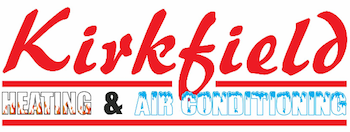
We can all benefit from saving a few bucks where we can. One of the simplest ways to do this is by improving energy efficiency in your home. Upgrading your HVAC system or installing a smart thermostat, for example, provides more control over your HVAC equipment, resulting in a more energy-efficient home and savings on your monthly energy bills.
Keep reading to learn more about 4 ways you can make energy-efficient home enhancements.
1. Look for Smart Home Products Like a Smart Thermostat
If you still use a round-dial thermostat and control it manually, think about taking a step toward the future by installing a smart, or Wi-Fi, thermostat – which comes with a number of features to assist with energy efficiency.
The feature homeowners like the most is having the ability to access their smart thermostats from anywhere with their smartphone or other smart device. For example, when you forget to use your thermostat before taking a vacation, you can simply use your smartphone and make the adjustments.
Like a programmable thermostat, a smart thermostat enables you to schedule your home’s temperature according to the time of day and day of the week so you’re not cooling or heating an empty house. Smart thermostats also have the ability to watch your temperature preferences over time and automatically make energy-efficient modifications. They even create monthly energy reports that show how much energy you are using and when so you can make adjustments to reduce costs.
If you’re curious about how to get a free smart thermostat, ask your utility company to find out if there are any discounts or free smart thermostats available.
2. Regularly Scheduled Tune-Ups for Your HVAC System
Unfortunately, many homeowners often forget to have their heating and cooling systems maintained. While this does not seem important, ignoring maintenance could produce a number of issues, including inefficiency, breakdowns, and a shorter system lifespan.
With an HVAC maintenance service, the technician will examine your HVAC system, clean necessary components, and pinpoint minor problems before they produce bigger, more expensive repair issues. Tune ups keep HVAC systems working at optimal condition, which means they use less energy to heat and cool your home. This can reduce your energy bills, prolong the lifespan of HVAC equipment, and lead to fewer repairs.
We recommend two HVAC tune ups each year – once in the spring before summer and another during the fall before the arrival of frigid weather.
3. Upgrading Your Aging, Inefficient HVAC Equipment
Unfortunately, like any appliance, HVAC systems have a shelf life and ultimately need to be replaced. New heaters and cooling systems are much more energy efficient than models sold just over a decade ago. Fortunately, quality HVAC companies like Kirkfield Heating & Air Conditioning can perform professional services like furnace installation in Winnipeg.
Well-maintained furnaces and air conditioners can live about 15-20 years. If your systems are within that period of time, it might be a good idea to replace them early to prevent untimely equipment failures that can leave you cold and uncomfortable on a cold winter night. If your HVAC system is approaching 15 years old and requires an expensive repair, it’s definitely time to replace the unit. According to the U.S. Department of Energy, getting a new HVAC system can sometimes save you between 20-40% on your monthly energy bills, so you’ll get back some of the costs of putting in a new system.
A professional HVAC technician can help you identify the most energy efficient HVAC system available. For the most part, look for HVAC systems that are Energy Star certified, meaning the equipment fulfills strict guidelines established by the U.S. Environmental Protection Agency. LENNOX HVAC systems are some of the most efficient systems on the market, boasting both high AFUE and SEER ratings. AFUE is for heating systems and measures how well they convert fuel to heat. SEER, meanwhile, is used to calculate the energy efficiency of cooling systems.
Contact a reputable HVAC provider like Kirkfield Heating & Air Conditioning for air conditioning installation in Winnipeg.
4. Look for Energy-Efficient Air Filters
If you’re searching for new HVAC filters, consider that not all air filters are capable of providing the same results. Specific air filters are far more effective than others, resulting in lower energy bills and a clean home.
The performance of HVAC air filters is illustrated by their Minimum Efficiency Reporting Value, or MERV rating. The MERV scale ranges from 1-20; the higher the number, the more efficient the filters are. It’s relevant to note, though, that high-efficiency air filters can in fact obstruct airflow too much based on the type of HVAC system you own. It’s beneficial to study the owner’s manual before purchasing a filter to determine the ideal model for your system.




